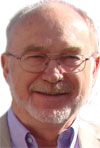
Most of the time, developments in industrial technology are a success or failure as a result of the benefits provided to the customer – often in terms of cost, but also factors like accuracy, reliability, speed of response or convenience can be important too. Such projects might be called market-demand led technological developments.
It seems the market for solar power systems, particularly for the larger systems of 50 MW output capability or more (i.e. small power stations), is totally different. The risk and return potentially available make such projects of limited interest for a conventional business investment – but this does not mean that some investors do not take the plunge. Primarily, new market drivers come into operation: the politicians and climate change pressure groups. This is not a centrally planned economy, such as might have been seen some years ago in the eastern bloc, but really stems from decisions forced onto politicians by public opinion.
This ‘driven by public opinion’ produces problems, as public opinion is fickle, and is potentially manipulated by stories published by all sides, without declaring their interests. So there is a massive amount of published information of dubious value!
Major solar power projects
The larger solar power generation systems are not photovoltaic (PV) systems, but ‘Solar Thermal’ power plants. Within this category there are two major styles. The first, straightforward solar thermal system uses a controlled collection of mirrors, or an aimed parabolic mirror, to concentrate the sun’s rays onto a pipe containing a heat transfer medium, a fluid that is pumped round the mirror system and delivers the heat generated via a heat exchanger to water, converting it into steam. This is then used to drive a steam turbine generator, as in a conventional power station. Then the steam is passed through further heat exchangers, eventually being recovered for reuse.
The second system is ‘Concentrating Solar Thermal’ power generation (CSP), where the mirrors concentrate the sun’s rays onto a single collection point that forms the top of a tower in the middle of the array of mirrors. This is usually a molten salt collection point, which typically reaches 565°C. This molten salt can then be used to heat water to create steam, which again drives a steam turbine generator. This system has some added benefits, as the molten salt can be stored for a limited period, and used to generate electric power after the sun has set, i.e. in the evening when the power demand increases. One of the latest CSP plants under construction, the Aurora project at Port Augusta in South Australia, will be capable of producing 150 MW peak power, and will have a storage capability of 1100 MWh of heat energy: this could provide an average output of 130 MW for around eight hours.
Forecast annual output will be 38% of the rated peak power: this is comparable with the typical power output from wind farms, which varies 25-45%. So a 150 MW plant actually only achieves an output of 57 MW.
Energy storage
The major renewable energy generation technologies are hydroelectric, wind and solar, in that order of importance: the total power available from these is over 2000 GW worldwide, with solar PV systems providing 300 GW. Hydroelectric power has built-in energy storage, and can also be used as a store for the surplus energy output of other techniques, using pumped storage systems. Wind and solar PV need separate storage systems in general, and CSP solar systems can feed excess power into any extra storage systems available.
The battery manufacturers are developing systems to provide such storage, and again in South Australia, Tesla is installing a 129 MWh
lithium-ion storage battery alongside a wind farm, to even out the inevitable power fluctuations. Quoted as the largest lithium battery system in the world, this is still only 12% of the storage available on the Aurora CSP plant. Lyon Group is building other similar sized energy storage systems in Australia alongside current solar PV projects.
Who has invested into these plants?
Firstly, countries with a lot of sunshine, obviously: California, Spain, Italy, North Africa etc: currently there are major developments in South Africa (in the Northern Cape) and Australia. Most countries have made the investments attractive by subsidies. In 2016, the world total of solar thermal capacity was 4,8 GW, Spain having 2,3 GW and the USA 1,8 GW. The World supply of energy from all renewables exceeds 2000 GW.
The largest solar thermal plants and major recent investment has been in Spain, initiated in 2008, when that government provided significant incentives by offering a premium on the market price of the electricity generated, which multiplied the total supplier revenue by more than four times. When plans for 2355 MW were approved, the scheme was closed to new applicants. These plants include 46 using parabolic trough reflectors (2272 MW), three plants use power towers (51 MW) and two use linear Fresnel technology (31 MW). (Incidentally, Emerson suggest that over half of these plants use their Ovation control systems.) In 2012/13 the incentives were ‘modified’ by introducing increased taxes on the producers, which were quoted to reduce their net income by over 30%.

In South Australia the current investments into solar PV and CSP plants are backed by a parallel investment into battery based power storage systems, to increase the reliability of the power level supplied. The South Australia government has taken action because of recent power blackouts, and plans to source 25% of total electricity generation from ‘dispatchable’ renewable energy.
Nick Denbow spent 30 years as a UK-based process instrumentation marketing manager, and then changed sides – becoming a freelance editor and starting Processingtalk.com. Avoiding retirement, he published the INSIDER automation newsletter for five years, and then acted as their European correspondent. He is now a freelance Automation and Control reporter and newsletter publisher, with a blog on www.nickdenbow.com

© Technews Publishing (Pty) Ltd | All Rights Reserved